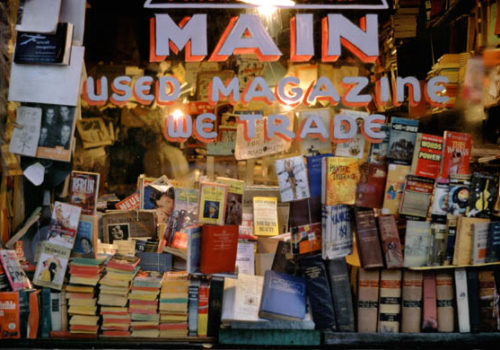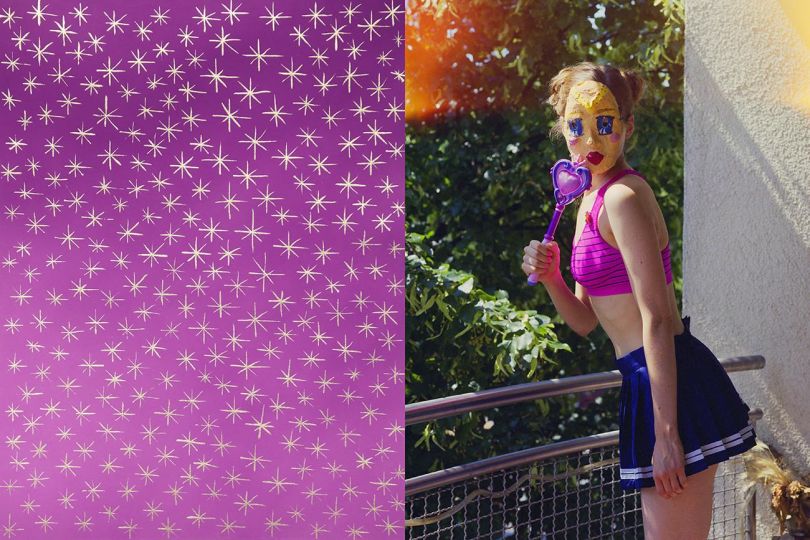Fred Herzog purchased his first camera in 1950 and began working in color to do what he describes as “intimate journalism in a city environment. They call that street photography now…. I would find certain street corners where people gathered, or other public spaces, places I felt would have an atmosphere that suited anybody. That’s where I would hang out. And those were the kinds of places I would take pictures. I wanted to show how people looked without an ideology of good or bad.”
The result of his life’s work is assembled in an intimate collection, one of the finest of the period. Released as Fred Herzog: Photographs (Hatje Cantz), the volume features an impressively edited and sequenced selection of work from the 1950s-2000, providing a powerful overview of the iconography of urban living in the second half of the twentieth century.
Photographing the streets of Vancouver, British Columbia, Herzog’s world reveals the beauty of the mundane. As years pass and styles change, what was once commonplace now takes on the patina of “the good old times” as it ages. With the benefit of tightly composed frames, Herzog’s world is one where the background takes center space and we luxuriate in the bright yet subtle light of daily life.
As Herzog aptly explains, “I was a little bit influenced by the feedback I got on my earliest pictures around 1957. I somehow knew then that I had what I wanted. I pictured myself having to show what the city looked like to people maybe fifty or a hundred years from now…. [It was] my self assigned task, and it seems I had a gift for it. I perceive that the man who took those pictures is almost a different person.”
In 1957, Brassaï arrived in America. He traveled from April to July, marking a turning point in the photographer’s career. In 1951, the artist has been included in the wildly popular MoMa exhibition, Five French Photographers, alongside Henri Cartier-Bresson, Robert Doisneau, Izis, and Willy Ronis, marking his acceptance in the art world. Exceedingly well received, Brassaï went on to exhibit work from his graffiti series at the Museum in 1956. The following year he arrived in New York and the work from this period is collected in the magnificent volume, Brassaï in America 1957 (Flammarion).
Here we get a glimpse of street life in New York, from Coney Island to Times Square. And New York, in its tirelessly evolving way proves the more things change, the more they stay the same. Brassaï’s photographs give us a glimpse of the space between the private and the public, the moments where the masks slip off and the real person is exposed in a brief moment caught on film for eternity. Brassaï is a master of the unswervingly personal space we occupy when we relax into the moment.
The volume also includes a collection of images taken from his travels further in America. A trip along the Mississippi River leads to New Orleans, a provocative city full of spirits and ghosts. Brassaï’s photographs capture the magic of this environ, where the mysterious calls through sex, music, and God.
Brassaï was originally from Hungary, and among his countrymen, photography has become one of the most potent forms of communication. As Robert Capa said, “It’s not enough to have talent, you also have to be Hungarian,” taking pride in the way in which his nation profoundly contributed to the development of the medium. Eyewitness: Hungarian Photographers n the Twentieth Century. Brassaï, Capa, Kertész, Moholy-Nagy, Munkácsi (Royal Academy of Arts, London, distributed by Abrams) provides a beautifully produced overview of the work of these iconic artists.
Looking at the historical influences on the country during twentieth century and the way in which each artist related aesthetically to manifest the dynamic changes of the age, Eyewitness offers provocative insight into the development of each artist within a larger historical context.
The range of work is impressive for its exploration of the medium. Be it experiments in Surrealism, photojournalism, fashion, portraiture, still lifes, and nudes, the images collected here are statuesque monuments to the lasting influence of the two dimensional image. Each of these artists offered their own understanding of the world as mediated by the photograph; the result is a rich and dense look at war and peace, life and death, beauty and suffering, but most of all, personal strength.
Sara Rosen
Book
Fred Herzog, Photographs
Fred Herzog in conversation with Stephen Waddell, texts by Claudia Gochmann. German/English. Hatje Cantz, 2010.
ISBN 978-3-7757-2811-9
Exhibition
Fred Herzog
Until October 29, 2011
Les Douches, la galerie
5, rue Legouvé
75010 Paris
Tel. +33 (0)1 78 94 03 00
Eyewitness: Hungarian Photographers n the Twentieth Century
By Péter Baki, Colin Ford and George Szirtes
Abrams, 2010
ISBN: 1-905711-76-X
Brassaï in America by Agnès de Gouvion Saint-Cyr, Flammarion, 2011.
ISBN: 978-2-08-020084-6
















